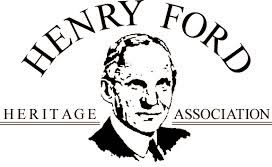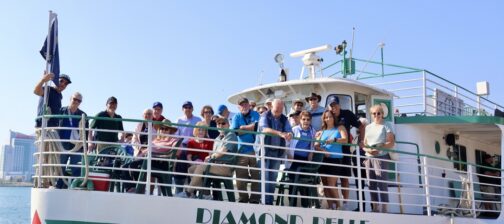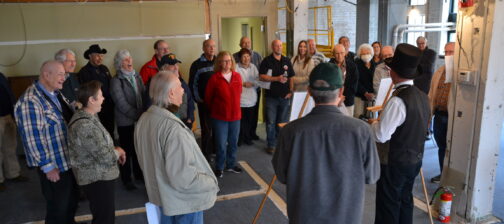Inspired by the reported splendor of the 11th century Mongolian summer capital, and composed after an admitted “opium induced” dream, this first line of Samuel Taylor Colerige’s great romantic poem Kubla Khan has, in modern times, become a metaphor for both great power and grand opulence. Orson Welles used the stanza in setting the mood for his 1941 classic Citizen Kane, referring to his main character, Charles Foster Kane (aka William Randolph Hearst), as “America’s Kubla Khan”.
High above Ann Arbor, Michigan’s beautiful Huron River, stands the personal Xanadu of a man who could cynically be called Henry Ford’s own Kubla Khan (or Genghis Khan, as many of those who knew him might have agreed). An opulent yet schizophrenic structure whose composition seems the result of paranoia rather than opioid, so reminiscent of the Wellesian melodrama, that on entering one may expect to hear the word “ rosebud “ reverberate throughout its halls.
The home that Ford’s personal mercenary called his “Castle” exists today as one remaining monument to the controversial character that was Harry Bennett.
It was thanks to Ford historian Dr. David L. Lewis and the extreme graciousness of the Castle’s current owners, Felecia and Dr. Aneel Karnani, that HFHA members were allowed a once in a lifetime tour of the Bennett sanctum. After meeting at the Henry Ford Estate, 100 members were transported about 30 miles to the Geddes Road site; traveling both by car and via the Dearborn Trolley, the latter piloted by HFE volunteer Otto Grau.
Upon arrival, the group received copies of two past Detroit Free Press articles, authored by Dr. Lewis, which profiled the castle and Dr. Lewis’ 1974 interview with Harry Bennett. The Karnani’s were presented with two volumes of Dr. Lewis’ Ford Country, a copy of his definitive biography The Public Image of Henry Ford and a reprint of Bennett’s own tome We Never Called Him Henry. After a question and answer period, in which the Karnani’s spoke of what it is like to live in such a home, tour participants were allowed to freely explore all the inner nooks and crannies of the house that Bennett built.
Harry Bennett purchased the 154-acre (now reduced to 8.6 acres) site in 1929. The man most feared for his ruthless treatment of Ford employees had reason to find refuge behind the gates of this fortress-like estate. Towers, tunnels, spiral staircases, “switch” steps, secret doors, hidden rooms and many other unique security features were incorporated into its design, all to protect the Lord of the manner from “well wishers”, union men and Detroit gangsters. Dr. Lewis has written that Henry Ford and Harry Bennett “designed the mansion with the enthusiasm of boys building a robber lair or pirate’s nest”. Since Ford was involved in the project, no expense was spared.
The architecture of the first floor seems to reflect Bennett’s artistic bent (in his youth he had studied art at the Detroit Fine Arts Academy). Arched hardwood doors, marble accents and vaulted ornamental plaster ceilings provide the perfect setting for the current owner’s collection of Indian art. Bennett’s “secret room” is now easily accessed through a normal doorway, eliminating the need to enter via the hidden fireplace door. A stunning feature is a black tiled, art deco bath complete with “porthole” window. A sweeping staircase climbs to the second floor within a castle-like tower. On the rail of a roof deck an original security spotlight rests in place.
Down in the basement, HFHA members found a bar and billiard room styled after an English Pub, an area where Bennett often conducted “Ford “ business. Another room is reminiscent of an underworld catacomb. Most unique, a tiled Roman bath carefully hidden beyond a sliding cabinet. For those members who dared, an exciting, yet somewhat claustrophobic, experience, was a stroll through the seemingly endless, and unlit, under ground tunnel. This ran from the hidden bath to the outbuilding that house Bennett’s infamous lion and tiger dens. A branch of this tunnel leads to an extremely tight spiral staircase, which ascends to the top of the home’s guntower.
A tour of the grounds revealed the small house Bennett built for his mother, the remnants of the pool house, and the overgrown ruins of a miniature village built for the enjoyment of the Bennett daughters.
The Bennett Castle lives up to its reputation as one of the most bizarre mansions in Michigan. An intimate reflection of the man Dr. Lewis, has described as Henry Ford’s most trusted – and toughest – lieutenant. During his day, few outsiders were made privy to its hidden features. The Henry Ford Heritage Association would again like to thank the Karnani’s for allowing us such a rare peak. One would doubt that Kubla Bennett would have been so accommodating.
I would build that dome in air,
That sunny dome! those caves of ice!
And all who heard should see them there,
And all should cry, Beware! Beware!



